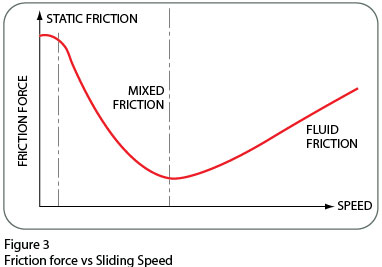Choosing Sealing Elements
- Home
- Hydraulic Sealing Elements
- Choosing Sealing Elements
System pressure, sliding speed, temperature, media, surface roughness and system tolerances are the important parameters when choosing the type of the sealing element.
PRESSURE
The first important feature that should be look at the system is the pressure, because the system working force is obtained by the cylinder bore diameter and the system pressure. While calculating the system pressure we recommend to take the shock pressures into consideration which are generally higher than the normal working pressures. Nowadays the demand for higher forces made the system pressures increase in the hydraulic systems. That is why there are new profiles with new engineering materials in the sealing elements. Kastaş offers sealing solutions that can go up to 700 bar. Working pressure of the sealing element can be seen in Product’s Programme
TEMPERATURE
The media and the working temperature are two most important factors in choosing the material for sealing elements. The ideal working temperature for sealing element and system is 50°C, but the application temperature usually goes up to 100°C. In dynamic applications, sealing elements do have direct contact with the sliding surface and that is why they have been effected by the heat originated from the friction forces. The system temperature should be less than the working temperature of the sealing element. Table 1 shows the maximum operating temperatures of the sealing elements. For special applications that require high temperatures, we recommend sealing elements produced from FKM and/or PTFE material. For low temperatures, it is believed that the sealing elements become harder (glass transition) and will not do the required job, but actually depending on the media the sealing elements are able to work without any problems up to -40°C. The operating temperatures for the sealing elements can be seen in Product’s Programme.

SPEED
The speed of the cylinder can go up to 15 m/sec depending on the material of the sealing element, design and the application. Speed is one of the important features which define the oil film generation and the friction forces. Figure 3 shows the increasement of the friction forces with speed increasing and oil film thickness decreasing. That is why at high sliding speeds the sealing elements should be chosen from PTFE material.
The sliding speed for the sealing elements can be seen in Product’s Programme.
MEDIA
The minimum and maximum operating temperature of the sealing elements do change with the media they are being used in. Sealing elements can be used in mineral oils (DIN 51524), non flammable hydraulic oils (VDMA 24317 or DIN 24320), atmosphere, water and different type of media (See section; Chemical Resistance of Rubber Materials). Table 1 shows the most common media used with the sealing elements.
The viscosity of the media is one of the reasons of wearing out of the sealing elements. Pressure and temperature change the viscosity of the media. The viscosity of the media increases with the pressure. Temperature increasement reduces the viscosity of the media (this change depends on the media type). The effect of operating pressure and temperature on the viscosity should be investigated when choosing the media type.
| Material | Operating Temp | STANDARD KASTAŞ COMPOUNDS | Mineral Oils Yağlar |
Air | Water | |||||||||||||||||||||||||||||||||||||||||||||||||||||||||||||||||||||||||||||||||||||||||||||
| Non-Flameable Hydraulic Oils | ||||||||||||||||||||||||||||||||||||||||||||||||||||||||||||||||||||||||||||||||||||||||||||||||||
|
HFA |
HFB |
HFC |
HFD |
|||||||||||||||||||||||||||||||||||||||||||||||||||||||||||||||||||||||||||||||||||||||||||||||
|
||||||||||||||||||||||||||||||||||||||||||||||||||||||||||||||||||||||||||||||||||||||||||||||||||
